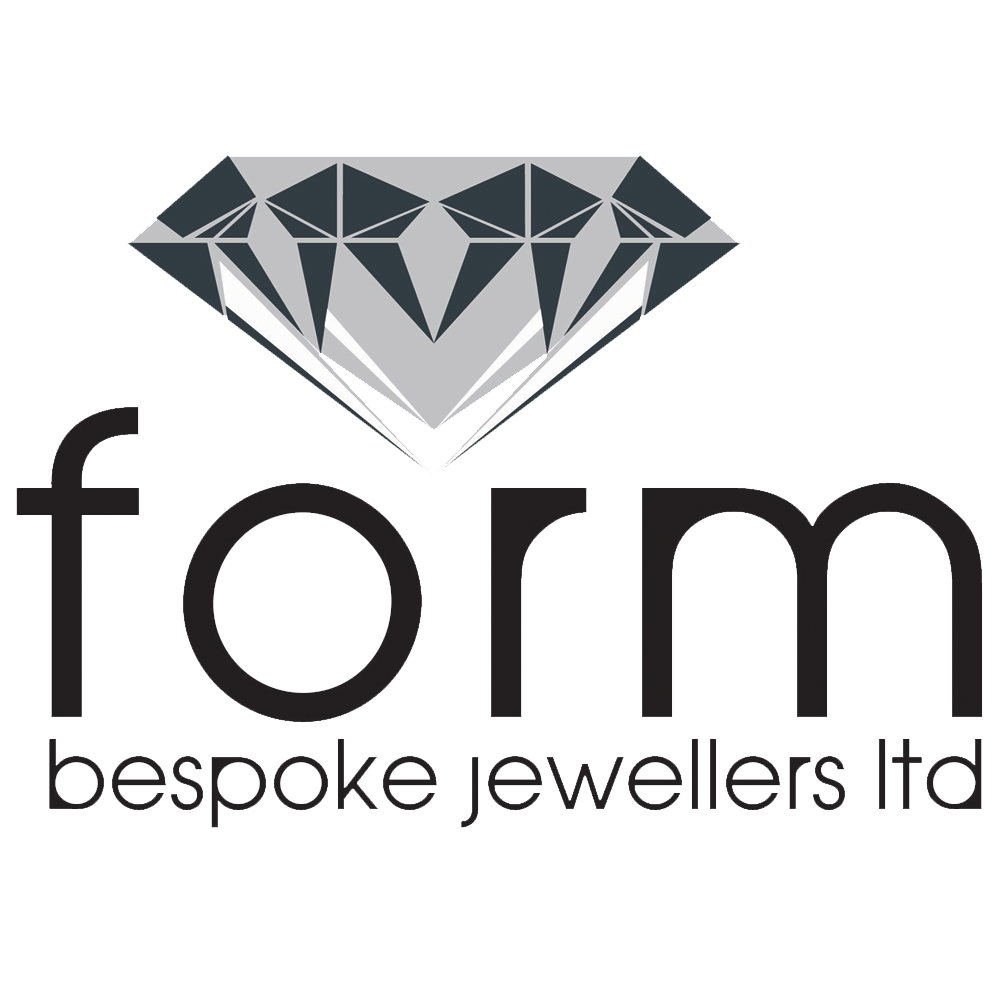Our helpful Diamond Guide
We understand that it can difficult to choose the perfect diamond for yourself or your partner. Especially with all the added pressures of an engagement or a wedding! But don’t worry, we’re here to help with our handy Diamond Guide.
Whether you have a budget in mind or not, here at Form Bespoke Jewellers, we can talk you through the different diamond sizes, shapes, colours and prices. We offer both mined diamonds and lab created diamonds.
For now, here is some useful information to help you become a little more familiar with diamonds.
The Four Cs
When deciding upon the perfect diamond, the best way to start is to look at “The Four Cs”.
Carat
Indicates the weight of a diamond. Weight is measured in carats and points, a bit like pounds and pence. There are 100 points to one carat. So a quarter of a carat is 25 points. An 80 point diamond is just over 3/4 of a carat. The bigger the diamond weight, the rarer it is and so the more expensive it becomes. Statistically, a 1 carat diamond is one in a million diamonds mined.
Colour
Diamonds range from colourless to light yellow and light brown. It’s also called the D to Z colour range. The scale begins with D (colourless) and continues through the alphabet to Z. D, E, F are colourless and G, H, I are near colourless. Within the D to Z range, when all other factors are equal, colourless diamonds are by far the most valuable. Here at Form Bespoke Jewellers, we usually try to stick with diamonds of D to I colours. Lower than that and you will start to see tinges of yellow in your diamond.
Clarity
The evaluation of the diamond’s internal and external characteristics. Clarity characteristics become part of a diamond during formation or result from crystal structure. They might also be a result from damage to the stone or be introduced during cutting or treatment. The fewer “inclusions” or blemishes, the more desirable the diamond. The clarity scale starts at the top with F & IF (Flawless and Internally Flawless). Then there’s VVS1 & VVS2 (Very, Very Slightly Included). Then, VS1 & VS2 (Very Slightly Included) and SI1 & SI2 (Slightly Included). The bottom grading is I1, I2, I3 (Included). Our expert jewellers usually work with diamonds between VS to SI. At these scales you will get a truly beautiful stone; one you’ll be proud of.
Cut
The cut of a diamond is incredibly important to how a diamond looks. A diamond is cut in a certain way so that the light comes into it, reflects around it and then should leave the diamond straight out of the top facet (the table). Facets are the flat sides of the diamond. If the angles of the facets have been cut incorrectly the light won’t reflect around the stone in the right way. Or, if a diamond is too shallow or too deep the light may leave out of the side of the diamond. This is when a stone will look as though there is no life to it. The proportions and the cut of the diamond can make or break the way it looks. A lot of diamonds sold on the internet have this against them, they may look good on paper but when you get to see them in real life it’s often a different story.
Diamond shapes
Diamonds come in all different shapes. Choosing which one (or combination) you think is perfect for you is simply down to personal preference. However, at Form Bespoke Jewellers, we are always here to help guide you with what may suit your style and budget best.
Please note: there are other diamond cuts (Fancy Cuts) that are not listed. If you are looking for one of these, please just get in touch and we’ll do our best to source some options for you.
Diamond contacts
We are very fortunate to have many reputable contacts within the jewellery trade, especially within the diamond and gemstone sector. We are able to contact our friends in Antwerp, Amsterdam, Israel and New York, not forgetting London of course.
When you have chosen to make your jewellery piece extra special with a bespoke design, we too want to ensure we dedicate the same effort by sourcing diamonds that are the best choice and prices for you.
Certificated diamonds
There are different grading companies who certify diamonds. A diamond certificate is a report listing all the measurements and characteristics of a diamond. It is a document that proves your diamond is officially what you have been told it is.
GIA (Gemological Institute of America) is one of the best certification companies. You can read here their explanation on how to choose the right diamond for you: Gemological Institute of America – diamond certification process
Other certification companies are IGI (International Gemological Institution) and HRD Antwerp Institute of Gemmology.

